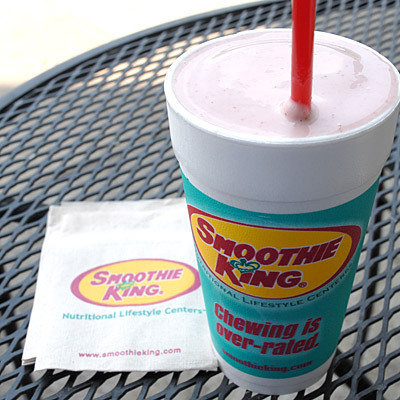Flexibility
Flexibility is the ability of the muscles and tendons to relax and stretch easily. It determines the amount of movement your bones can make in any direction around joints such as shoulders, elbows, hips and knees. Stretching improves your posture and helps to prevent low back pain. Stretching your hamstrings, quadriceps, hip flexors and low back muscles regularly, promotes relaxation in the tissues reducing the strain on your back. Today, 80% of adults will suffered from lower back pains. Warm-up stretching exercises loosen tendons, increase blood circulation, and help prevent injuries during your workouts or any activity. Cool-down stretching helps relieve muscle soreness and tightness.
THREE TYPES OF FLEXIBILITY
1. Dynamic flexibility -- this is your ability to perform dynamic movements within the full range of motion in the joint. An example is twisting side to side, swinging your arms around in circles, or kicking an imaginary football. You may perform dynamic stretches in sets of 8-12 repetitions. Perform as many sets as is required to gain your full range of motion. You should stop when you muscles become tired. Your muscles produce diminished returns during dynamic stretching exercises.
2. Static Active flexibility -- this refers to your ability to stretch an antagonist muscle using only the tension in the agonist muscle. An example is holding one leg out in front of you as high as possible. The hamstring (antagonist) is being stretched while the quadriceps and hip flexors (agonists) are holding your leg up. You can also stand on one leg; hold your other leg out in front of you as high as possible. Each static active stretch should be held for 10-15 seconds and 1-2 stretches per muscle group is sufficient.
3. Static Passive flexibility -- this is your ability to hold a stretch using your body weight or some other external force. Imagine holding your leg out in front of you and resting it on a chair. Whereas static active stretching requires the tension of opposing muscles to hold the stretch, static passive stretching uses some other object for support. Static passive stretching helps relax your muscle groups. It should be part of your cool down. Static passive stretches should be held for about 10 seconds and 2-3 stretches per muscle group is enough.
TEN BASIC STRETCHING EXERCISES
For stretching exercises to be effective, raise your body temperature first. A pre-exercise warm up should consist of 5-10 minutes of light aerobic exercise followed by stretching exercises for all major muscle groups.
1. Shoulder Stretch
Interlock your fingers and reach above your head. Your lower back should be flat or slightly arched inwards. This exercise can be performed in a seated or standing position.
2. Triceps Stretch
Place your left hand behind your head and reach as far down your back as possible. With your right hand, grasp your left elbow and gently pull it behind the back of your head. This exercise can be performed in a seated or standing position.
Switch arms and repeat.
3. Chest stretch
Clasp your hands behind your back. Gently straighten your elbows and raise your arms as high as comfortably possible. This exercise can be performed in a seated or standing position.
4. Lower back Stretch
While lying flat on your back, place the sole of your right foot on your left thigh. Grasp your right knee with your left hand and gently roll it to the left. Try to position your knee as close to the floor as possible without your right shoulder leaving the floor.
5. Groin Stretch
Stand with your feet about 2 meters apart with your toes pointing forward. Gradually shift all your weight to your right leg by bending your right knee. Your left leg should stay straight. Place both your hands on your right knee for support. To achieve a greater stretch, increase the starting distance between your feet.
6. Groin Stretch 2
Sit down and place the soles of your feet together. Clasp your ankles with your hands so that your elbows rest on your knees. Gently push your knees down with your elbows until your feel a stretch.
7. Quadriceps Stretch
While standing upright, hold onto a support with one hand (i.e. a chair) for balance. With your other hand clasp take your ankle and pull your heel into your butt. Repeat the same steps for the other leg.
8. Hamstring Stretch
Sitting down; stretch your legs out in front of you while keeping your back flat and upright. Bend your left leg, keeping your left foot flat on the floor. Slowly reach forward and try to touch your right toe with both hands. Bend from your waist keeping your lower back flat and your head up. Repeat these steps for the other leg.
9. Calf Stretch
Stand arms length away from a wall and with feet shoulder width apart. Place your right foot about 2 feet in front of your left. While keeping both heels flat on the ground, lean towards the wall by bending your right knee. Your left leg should stay straight. You may push gently against the wall for a deeper stretch. Repeat these steps for the left leg.
10. Achilles Stretch
This exercise is exactly the same procedure as above except as you lean towards the wall let both knees bend. Rather than leaning forward you should feel like you are lowering yourself straight down. Remember to keep both heels flat on the floor. Repeat these steps for the other leg.
THREE TYPES OF FLEXIBILITY
1. Dynamic flexibility -- this is your ability to perform dynamic movements within the full range of motion in the joint. An example is twisting side to side, swinging your arms around in circles, or kicking an imaginary football. You may perform dynamic stretches in sets of 8-12 repetitions. Perform as many sets as is required to gain your full range of motion. You should stop when you muscles become tired. Your muscles produce diminished returns during dynamic stretching exercises.
2. Static Active flexibility -- this refers to your ability to stretch an antagonist muscle using only the tension in the agonist muscle. An example is holding one leg out in front of you as high as possible. The hamstring (antagonist) is being stretched while the quadriceps and hip flexors (agonists) are holding your leg up. You can also stand on one leg; hold your other leg out in front of you as high as possible. Each static active stretch should be held for 10-15 seconds and 1-2 stretches per muscle group is sufficient.
3. Static Passive flexibility -- this is your ability to hold a stretch using your body weight or some other external force. Imagine holding your leg out in front of you and resting it on a chair. Whereas static active stretching requires the tension of opposing muscles to hold the stretch, static passive stretching uses some other object for support. Static passive stretching helps relax your muscle groups. It should be part of your cool down. Static passive stretches should be held for about 10 seconds and 2-3 stretches per muscle group is enough.
TEN BASIC STRETCHING EXERCISES
For stretching exercises to be effective, raise your body temperature first. A pre-exercise warm up should consist of 5-10 minutes of light aerobic exercise followed by stretching exercises for all major muscle groups.
1. Shoulder Stretch
Interlock your fingers and reach above your head. Your lower back should be flat or slightly arched inwards. This exercise can be performed in a seated or standing position.
2. Triceps Stretch
Place your left hand behind your head and reach as far down your back as possible. With your right hand, grasp your left elbow and gently pull it behind the back of your head. This exercise can be performed in a seated or standing position.
Switch arms and repeat.
3. Chest stretch
Clasp your hands behind your back. Gently straighten your elbows and raise your arms as high as comfortably possible. This exercise can be performed in a seated or standing position.
4. Lower back Stretch
While lying flat on your back, place the sole of your right foot on your left thigh. Grasp your right knee with your left hand and gently roll it to the left. Try to position your knee as close to the floor as possible without your right shoulder leaving the floor.
5. Groin Stretch
Stand with your feet about 2 meters apart with your toes pointing forward. Gradually shift all your weight to your right leg by bending your right knee. Your left leg should stay straight. Place both your hands on your right knee for support. To achieve a greater stretch, increase the starting distance between your feet.
6. Groin Stretch 2
Sit down and place the soles of your feet together. Clasp your ankles with your hands so that your elbows rest on your knees. Gently push your knees down with your elbows until your feel a stretch.
7. Quadriceps Stretch
While standing upright, hold onto a support with one hand (i.e. a chair) for balance. With your other hand clasp take your ankle and pull your heel into your butt. Repeat the same steps for the other leg.
8. Hamstring Stretch
Sitting down; stretch your legs out in front of you while keeping your back flat and upright. Bend your left leg, keeping your left foot flat on the floor. Slowly reach forward and try to touch your right toe with both hands. Bend from your waist keeping your lower back flat and your head up. Repeat these steps for the other leg.
9. Calf Stretch
Stand arms length away from a wall and with feet shoulder width apart. Place your right foot about 2 feet in front of your left. While keeping both heels flat on the ground, lean towards the wall by bending your right knee. Your left leg should stay straight. You may push gently against the wall for a deeper stretch. Repeat these steps for the left leg.
10. Achilles Stretch
This exercise is exactly the same procedure as above except as you lean towards the wall let both knees bend. Rather than leaning forward you should feel like you are lowering yourself straight down. Remember to keep both heels flat on the floor. Repeat these steps for the other leg.
Related Articles
-
HCG diet-one of the well known method of losing excess fat.
HCG diet is one of the well known methods of losing excess fat. HCG is
-
Healthy Nutrition Plan For Weight Loss - An Effective Weight Loss Diet Requires Proper Nutrition
Healthy Nutrition Plan For Weight Loss Some people believe that effec
-
How 99 cents can lead to more weight loss
The next time you are in Walgreens or CVS head to the back of the stor
-
Fat Burning Furnace - Why You Should Jump on the Short Burst Workout Bandwagon for Speedy Weight Loss!
Fat Burning Furnace - Why You Should Jump on the Short Burst Workout B
-
Natural Ways To Increase Metabolism - Adrenaline-X
You may think that increasing your metabolism by the fast pace is easy
-
HCG Recipes - Dr. Simeons HCG Recipes Review
How do you manage to have a healthy and fit body? All you have to focu
- DON'T MISS
- Three Powerful Weight Loss Approaches That Add Leverage To Your Endeavours
- Fat Burning Furnace Megaupload
- OBESITY TYPES AND CURE
- Sensible Dieting For Far Better Outcomes
- Is The Every Other Day Diet A Scam
- Fast Weight Loss | Tips for Fast Weight Loss
- Buy Alli Now and Stop Excess Fat
- Toe Tap Your Way to Weight Loss
- Untrue facts linked with Weight Loss
- Effortlessly Saving Cash While Losing Weight With Medifast Diet Coupon Codes




